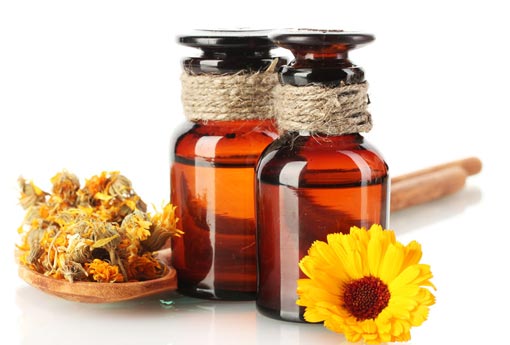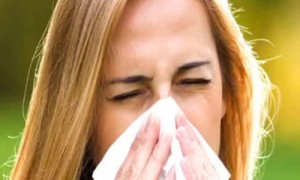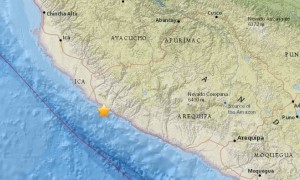Basic Information
Chinese name: essential oil
Foreign name: Essential oil
Alias: Western Herbs
From fragrant: fragrant plants
Attributes: plant extracts, volatile
Function: Conditioning the body, soothing and purifying the mind
Introduction
Volatile oils (VOLATILEOILS), also known as essential oils (Essential Oils), are a class of volatile oily liquids that can be distilled with steam, most of which have aromas, such as peppermint oil, clove oil, etc. There are many Chinese herbal medicines containing volatile oils, and many are also aromatic, especially the Lamiaceae (mint, basil, Huoxiang, etc.), Umbelliferae (fennel, angelica, coriander, Angelica, Chuanxiong, etc.), Compositae (Artemisia argyi, It is richer in families such as Yin Chen, Atractylodes, Atractylodes, Muxiang, etc.), Rutaceae (orange, orange, prickly ash, etc.), Lauraceae (camphor, cinnamon, etc.), Ginger (ginger, turmeric, turmeric, etc.). Most Chinese herbal medicines or extracted volatile oils containing volatile oils have the functions of sweating, regulating qi, relieving pain, inhibiting bacteria, and correcting taste.
commonality
1. Most volatile oils are colorless or light yellow. All have special gas (mostly aroma) and spicy taste, and are generally volatile at room temperature.
2. Most volatile oils are lighter than water, and only a few volatile oils are heavier than water, such as clove oil, cinnamon oil, etc., generally between 0.850 and 1.180.
3. The volatile oil is insoluble in water and can be completely dissolved in absolute ethanol, ether, chloroform and fatty oil. A certain amount of water can be dissolved in various concentrations of water ethanol, the smaller the concentration of ethanol, the less the amount of volatile oil dissolved. The volatile oil can dissolve a small amount in water, so that the aqueous solution has the unique aroma of the volatile oil. this property is often used in medicine to prepare aromatic water and injections, such as peppermint water, Houttuynia cordata injection, Bupleurum injection and so on.
4. All kinds of volatile oils have certain optical activity and refractive index. The refractive index is an important basis for the quality identification of volatile oil. Generally, the refractive index of volatile oil is between 1.450 and 1.560.
5. Volatile oil is a mixture of various chemical components, so most of them have no definite boiling point and freezing point.
6. At low temperature, solid substances (which are one of the components of oil) can often be precipitated in volatile oil, such as menthol in peppermint oil, cinnamaldehyde in cinnamon oil, and camphor in camphor oil.
chemical components
Volatile oil is a mixture of various types of compounds, including aliphatic compounds, aromatic compounds, but more terpenoid derivatives, which are described as follows:
1. Aliphatic compounds: there are hydrocarbons, alcohols, aldehydes, ketones, esters, etc., which are widely found in plants, especially fruits. Such as n-propanol, octanal, ethyl acetate, formic acid, ethyl ester of octanoic acid, etc.
2. Terpenes: The basic structure of terpenes is mostly isoprene, with the general formula of (C5H8)n. C10H16 is called monoterpenes, C15H24 is called sesquiterpenes, C20H32 is called diterpenes, compounds composed of 6 or 8 isoprenes are called triterpenes and tetraterpenes, respectively, and are composed of more isopentyl Compounds composed of dienes are called polyterpenes. The terpenes in volatile oil are mainly monoterpenes and sesquiterpenes. Polyterpenes do not exist in volatile oils, but are components of certain resins, pigments, rubber, etc. Terpenoids in volatile oils can be oxygenated or non-oxygenated. For most volatile oils, although oxygen-free hydrocarbon components account for a large amount, most of them have no good aroma and are not important components. Oxygen-containing derivatives include alcohols, aldehydes, ketones, ethers, acids, phenols, esters, etc. Although the content is small, most of them have excellent aromatic gas and are important components in volatile oils.
Assay
The main principle is that the volatile oil contained in the Chinese herbal medicine can be distilled together with water vapor and collected in a standard measuring device to calculate its percentage. Commonly used methods and instruments are specified in the Chinese Pharmacopoeia.
test methods
Method name: Nepeta paniculata - Determination of volatile oil - Determination of volatile oil
Scope of application: This method adopts the volatile oil determination method to determine the content of volatile oil in the spikes of Nepeta.
This method is suitable for the determination of volatile oil content in Nepeta paniculata.
Method principle: Add an appropriate amount of water to the volatile oil measuring device for the test sample, heat it to boiling and keep it slightly boiling for 5 hours, read the amount of volatile oil in the measuring device, and calculate its content.
Reagent: Sodium Chloride
Instruments: 1. Instruments
1.1 Volatile oil measuring device: 1000mL (or 500mL, 2000mL) hard round bottom flask, connected to the volatile oil measuring device, and the upper end of the volatile oil measuring device is connected to a reflux condenser. All the above parts are connected with glass grinding mouth. The analyzer should have a graduation of 0.1 mL. All instruments should be thoroughly cleaned, and the joints should be checked for tightness to prevent volatile oil from escaping.
Note: The branch pipe of the volatile oil measuring device in the device should be parallel to the reference line.
Sample preparation:
Operation steps: Precisely measure 10 mL of the test sample, put it in a separatory funnel, add 100 mL of saturated sodium chloride solution, shake for 1 to 2 minutes, leave it for 1 to 2 hours, separate the upper liquid, and transfer it to a round-bottomed flask, Wash the separatory funnel with hot water several times, add the washing liquid into a round-bottomed flask, add 300-500 mL of water and a few glass beads, shake and mix, connect the volatile oil measuring device and the reflux condenser. Add water from the upper end of the condenser to fill the scale part of the volatile oil measuring device and overflow into the flask. Put it in an electric heating mantle or use other suitable methods to slowly heat it to boiling, and keep it at a slight boil for about 5 hours. When the amount of oil in the measuring device no longer increases, stop heating, leave it for a while, open the piston at the lower end of the measuring device, and slowly release the water. , until the upper end of the oil layer reaches 5mm above the scale 0 line. Leave it for more than 1 hour, then turn on the piston to make the oil layer drop to the level where the upper end of the oil layer is just flush with the 0 line of the scale, read the amount of volatile oil, and calculate the content (%) of the volatile oil in the test sample.
Use contraindications
Misunderstandings when using essential oils for skin care:
1. Essential oils are just beauty care products
Many consumers think that essential oils are just a kind of natural skin or body care products, and they think that essential oils can whiten, remove wrinkles, lose weight, increase breasts, and so on.
But in fact, the effect of essential oils is far more than that! The help of essential oils to the skin is from the inside out, from the health of the mind to the health of the body, and then to the health and beauty of the skin , which is impossible for any expensive skin care product.
2. Essential oils cannot be used during the physiological period
In fact, aromatic essential oils have a very significant effect on skin conditioning and mental soothing during the physiological period, because essential oils can not only heal the discomfort of the organs, but even more wonderfully, it can also take care of emotional problems.
For example, essential oils such as cypress, geranium, and ginger are very good for the maintenance of the physiological period. For several common symptoms, the formula of essential oils is as follows:
Dull complexion, irregular menstrual period: rose + cypress + geranium
Pale complexion and reduced menstrual flow: perilla + cypress + geranium
●Dry skin, severe dysmenorrhea: lavender + ginger + rosemary
3. Oral essential oils are more effective for beauty
Not only can you not take essential oils orally, but also use pure essential oils directly. Due to the high concentration, pure essential oils are absolutely not allowed to come into direct contact with the skin (except for tea tree and lavender essential oils), which must be diluted before use.
Therefore, the essential oil used for massage or maintenance must be the compound essential oil after being diluted, and the compound essential oil can be used directly on the skin.
4. Essential oils can be added to face creams
Add essential oils to the face cream on your own initiative, and the consequence is that a good bottle of face cream has deteriorated! The oil and water are separated! The taste is wrong!
What is the reason? The problem lies in the cream. Since the essential oil is purely natural and plant-based, if it encounters chemically synthesized substances or artificial flavors, it will react, causing the above phenomenon. Therefore, when formulating by yourself, you must choose cream products that are also natural ingredients.
5. The more frequency and amount of essential oils used, the better
People who love essential oils often make the beauty mistake of putting too much of it on themselves, which can actually backfire.
Essential oil is a pure natural substance. Due to its high concentration, even if it is diluted, it is not as dense as possible. Moderate use will make the essential oil play a good role, while too much will cause a burden on the kidneys and make your own Physical discomfort.
6. Essential oils contain hormones, and regular use will produce a sense of dependence
Essential oils are pure plant essences without any additives. Unlike drugs or hormones, they will not cause addiction or cause skin dependence. Because its effect is to stimulate the individual's own potential and potential, not to replace the function.
The components of essential oils usually include basic chemical elements such as alcohols, aldehydes, esters, ketones, oxides, and phenols. Each chemical element reacts in a specific way and exerts its function, thereby determining the efficacy of essential oils.
7. The essential oils used for aromatherapy do not touch the skin, and cheap essential oils can be used
The aroma of essential oils is as important as the effect of essential oils on regulating emotions as they enter the body and act on organs. So don't mistakenly think that the essential oils used in indoor aromatherapy only need to be fragrant, and choose those cheap and inferior products.
Inexpensive essential oils are often chemically synthesized. The "scent" simulated by this chemical composition will stimulate the nervous system, causing dizziness, chest tightness, and even nausea and vomiting. .
8. Essential oils can be DIY at home
In the actual use of essential oils, people are often troubled by their lack of knowledge about essential oils.
For example: using 5% rose essential oil that you can buy directly on the skin to cause sensitivity; using lavender to improve sleep, but causing excitement and insomnia due to excessive use Basically, there is no absolute contraindication to the combination, but because the blending of essential oils is suitable and unsuitable, perfect and imperfect, girls who like DIY essential oils, it is best to study in a professional aromatherapy academic institution.








